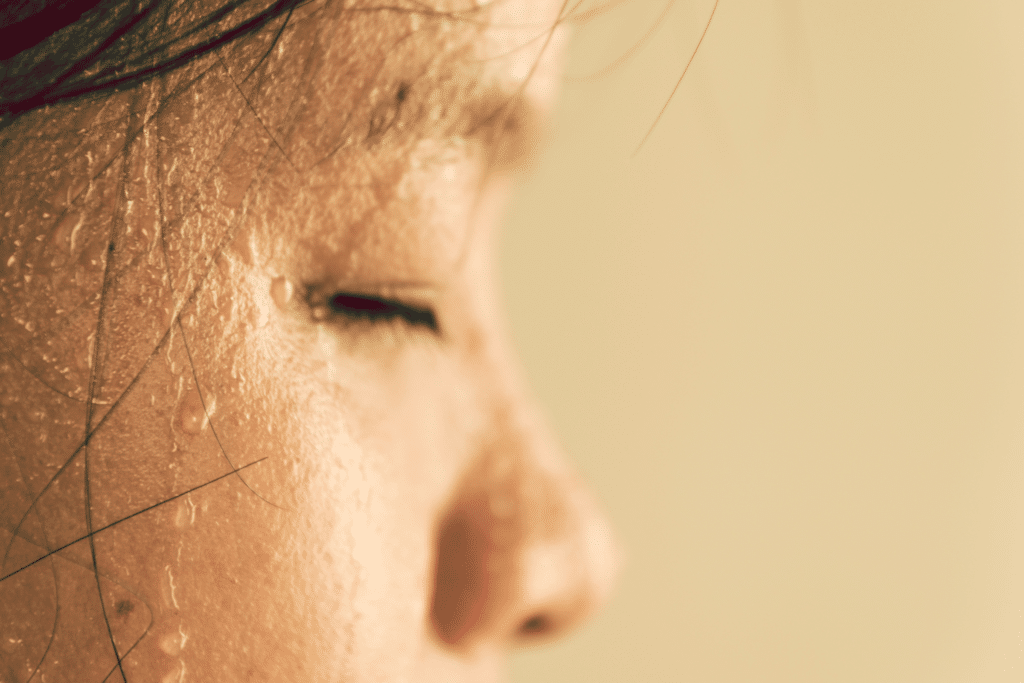A visit to the sauna is a relaxing pastime for many. However, can a sauna have any adverse effects on an individual? If you indulge in a sauna, will your hair stay healthy and pristine?
A sauna will dry out your hair as the perspiration produced by the sweat glands on your scalp contains trace amounts of salt and urea. The combination of water and salt acts as a drying agent and will result in a dry scalp and hair. Deep conditioning before and after the sauna can help prevent hair from getting dry and frizzy.
If you want to learn more about the reason why saunas dry out your hair, and how to prevent this from happening to you, keep reading!
How Does Sauna Work?
A sauna is a small room that uses dry heat to heat the interior from temperatures of 150℉ (65℃) to 195℉ (90℃). Dry heat is generated by heating rocks like peridotite, basalt, and hornblende. Referred to as sauna rocks, these rocks must be able to withstand exceedingly high temperatures without cracking in order for the room to heat up.
Once you’ve entered a sauna or steam room, your body responds by increasing circulation and producing sweat as a method of cooling down. This process helps relax your muscles, relieve tension, and promote a sense of wellbeing. It’s important to stay hydrated while you’re in a sauna or steam room, so be sure to drink water before, during, and after your session.
Let’s take a look at the three most common types of sauna.
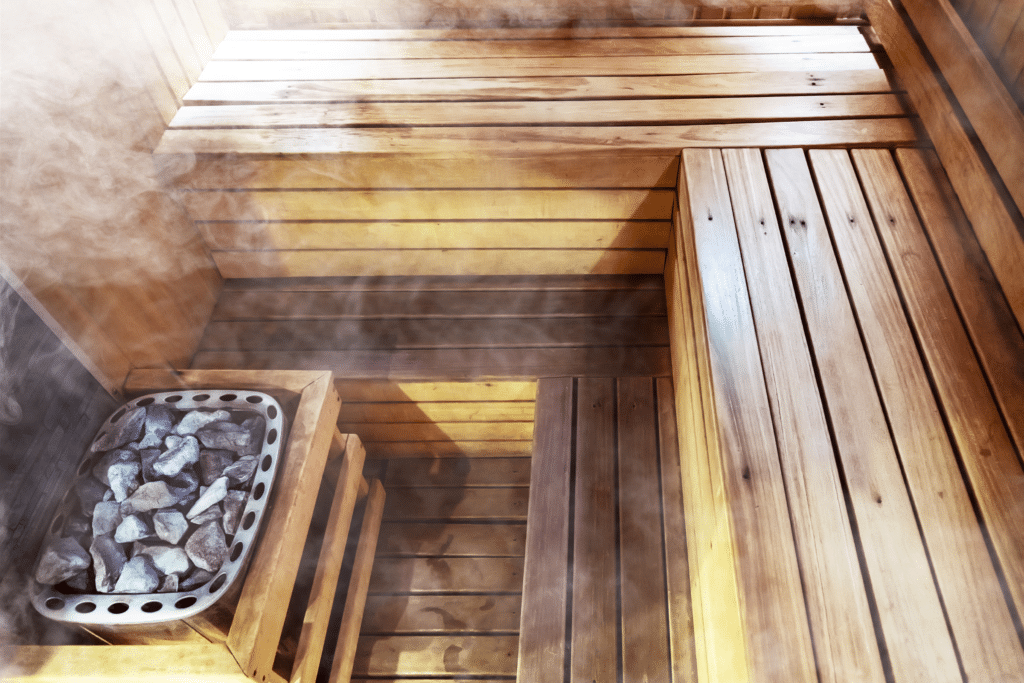
Traditional sauna
A traditional sauna is a room heated by a wood or electric stove producing dry heat. The temperature typically ranges from 160°F to 200°F. If you want to raise the humidity, pour water over the hot rocks, creating steam and making the air more moist.
However, a traditional sauna is considered a dry sauna due to the lower humidity levels, usually between 10% and 30%.
Here are some of the methods used today to heat sauna rocks:
- Wood – Traditional Finnish saunas burn wood to generate the heat needed to heat sauna rocks.
- Electricity – The stones are placed in an electric heater to be heated.
- Infrared – Instead of using sauna rocks, infrared saunas transfer heat via radiation, heating the user’s body directly without warming the surrounding air.
A sauna heats its users through the movement of dry, hot air within the room. When heated air comes into contact with a user, heat is transferred through a process called convection.
Steam rooms
Steam rooms, on the other hand, use a separate steam generator to create hot steam directly in the enclosed space. This leads to higher humidity levels, close to 100%, and temperatures between 110°F and 120°F. The increased humidity in steam rooms makes them feel warmer than the actual temperature indicates.
Infrared saunas
Infrared saunas are a more recent innovation. Unlike traditional saunas and steam rooms, infrared saunas use infrared heaters, emitting infrared light experienced as radiant heat. This heat is absorbed by the surface of your skin without heating the air around you. Infrared saunas work at lower temperatures compared to traditional saunas, usually around 120°F to 140°F.
Pros and Cons of Sauna on Hair Health
| Pros | Cons |
|---|---|
| Improved Circulation and Blood Flow | Can cause dryness and frizz |
| Reduced Stress | Possible breakage with prolonged exposure |
| Increased Sweating (Natural Detox) | Significant moisture loss |
| Relief from Pain and Improved Immune System | Evaporation of natural hair oils |
| Post-Workout Recovery Benefits | Can negatively impact dyed hair |
Will a sauna dry out your hair?
When you visit a sauna, the high temperature and humidity can impact your hair and scalp. Sauna heat can cause your hair to feel dry and possibly lead to frizz and roughness in the short term, especially if you have certain hair types prone to dryness.
However, know that sauna heat can also offer some benefits to your hair, such as increased circulation to the scalp and hair vitalization in the longer term.
In a sauna, your hair loses moisture due to the exposure to high temperatures. To avoid drying out your hair and causing breakage, protect your hair by wetting it before entering the sauna. This step helps in retaining the moisture within your hair and scalp, preventing hair from becoming overly dry.
For those with natural hair or hair that is more vulnerable to dryness and breakage, it’s crucial to take extra care. When using a sauna, it’s recommended that you cover your hair with a towel or a cap to protect it from direct heat exposure. Additionally, it’s essential to deep condition your hair and keep it moisturized regularly to maintain its natural moisture levels and prevent any further damage.
We’ll cover some more actionable tips on preventing dry hair below!

The scientific explanation behind saunas drying hair
Saunas are known for their high temperatures and low humidity levels. This environment can have a drying effect on your hair. In this section, we’ll explore the scientific reasons behind hair drying in saunas.
When you enter a sauna, the heat causes the water content in your hair to evaporate. This process is called dehydration. As the moisture in your hair evaporates, it can leave your hair feeling drier and more brittle. The higher the temperature and the longer your session, the more significant the drying effect.
A key factor in this process is humidity. Low humidity levels in a sauna create a faster rate of evaporation, as there’s less water vapor in the air. This means your hair loses moisture more quickly compared to a more humid environment.
Here are some factors that contribute to hair drying in saunas:
- High temperatures: Saunas typically have temperatures ranging from 70 to 100°C (158 to 212°F), causing rapid water evaporation from your hair.
- Low humidity: Traditional saunas have low humidity levels (around 10-30%), which speeds up the rate of evaporation in your hair.
- Duration: The longer your sauna session, the more time your hair has to lose moisture.
To counteract and minimize the drying effect of saunas on your hair, you can:
- Limit the duration of your sauna sessions.
- Apply a leave-in conditioner or hair oil to moisturize and protect your hair before entering the sauna.
- Hydrate your body by drinking enough water before and after the session.
- After the sauna, nourish your hair with a hair mask or deep conditioning treatment.
Remember, maintaining the balance between hydration and dehydration is essential for healthy hair. Although saunas can help relax your body and mind, it’s crucial to protect and care for your hair to avoid possible drying and damage.
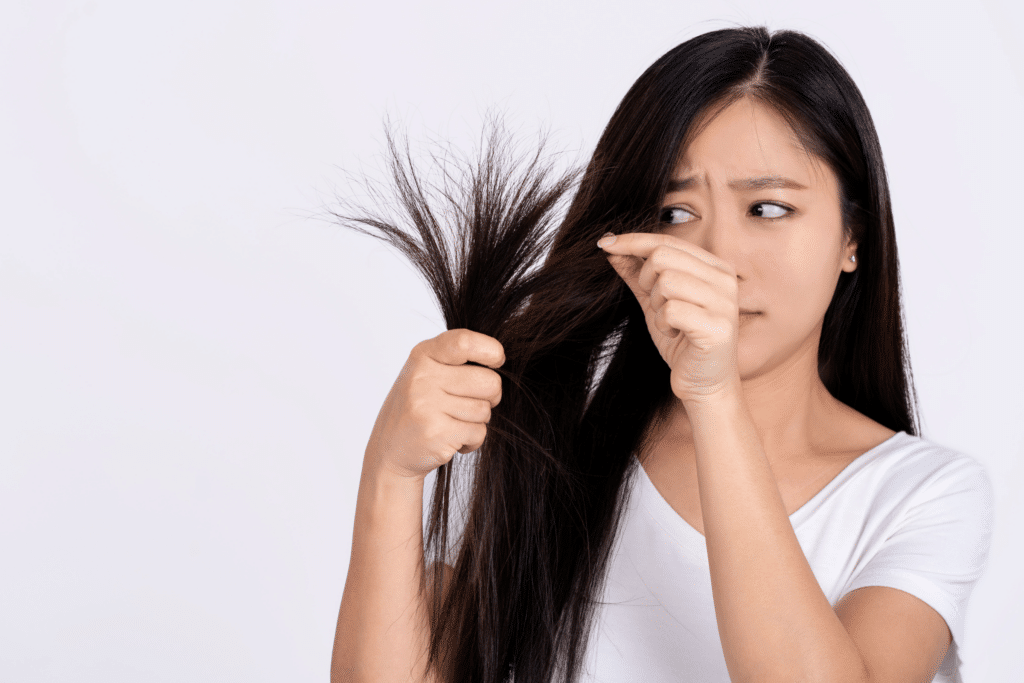
Potential hair benefits from the sauna
Saunas provide several advantages that may indirectly benefit your hair health. Although they don’t directly address hair issues, they can help create a healthier environment for hair growth.
- Improved Circulation and Blood Flow: When you sit in a sauna, your body’s temperature rises, causing blood vessels to dilate. This increased blood flow brings essential nutrients and oxygen to your hair follicles, promoting growth and strength.
- Reduced Stress: Stress is a known cause of hair loss and hampering hair growth. The relaxing atmosphere of a sauna gives you an opportunity to unwind, potentially decreasing your stress levels and contributing to better hair health.
- Increased Sweating: Sweating is a natural detoxification process that helps flush out toxins from your scalp. During a sauna session, your scalp sweats more than usual, helping maintain a cleaner and healthier environment for your hair.
- Relief from Pain and Improved Immune System: Regular sauna sessions can help alleviate pain in your body, including your scalp. It also enhances your immune system, which can result in fewer infections that could negatively impact your hair’s health.
- Post-Workout Recovery: After a workout, some people experience inflammation, soreness, or muscle pain. Using a sauna after exercising may help speed up the recovery process and improve circulation, ensuring your hair receives better support and nourishment.
Common Myths About Saunas and Hair Health
Many people believe that using a sauna can cause hair damage such as dryness, frizz, roughness, hair loss, and breakage. While it’s true that spending time in a sauna exposes your hair to heat and moisture, various misconceptions exist around their impact on hair health.
| Myth | Fact |
|---|---|
| Saunas inherently dry out hair | Incorrect; they can open hair cuticles for better hydration |
| Saunas cause frizz and roughness | Incorrect; steam can soften hair cuticles |
| Saunas are a primary cause of hair loss | Incorrect; other factors like stress, genetics are more significant |
| Saunas cause hair breakage | Incorrect; occasional and reasonable use won’t cause significant breakage |
Myth 1: Saunas dry out your hair
Contrary to popular belief, saunas don’t inherently dry out your hair. The heat and steam from the sauna actually help open up the hair cuticles, allowing moisture to penetrate more easily. This can actually improve your hair’s hydration, especially if you follow your sauna session with a thorough conditioning treatment.
Myth 2: Saunas cause frizz and roughness
People often assume that the heat and humidity in a sauna can lead to frizz and roughness. However, the steam can soften hair cuticles, making your hair more manageable and less prone to frizz. It’s important to avoid rubbing your hair with a towel or brushing it too vigorously after a sauna, as these actions can contribute to frizz and roughness.
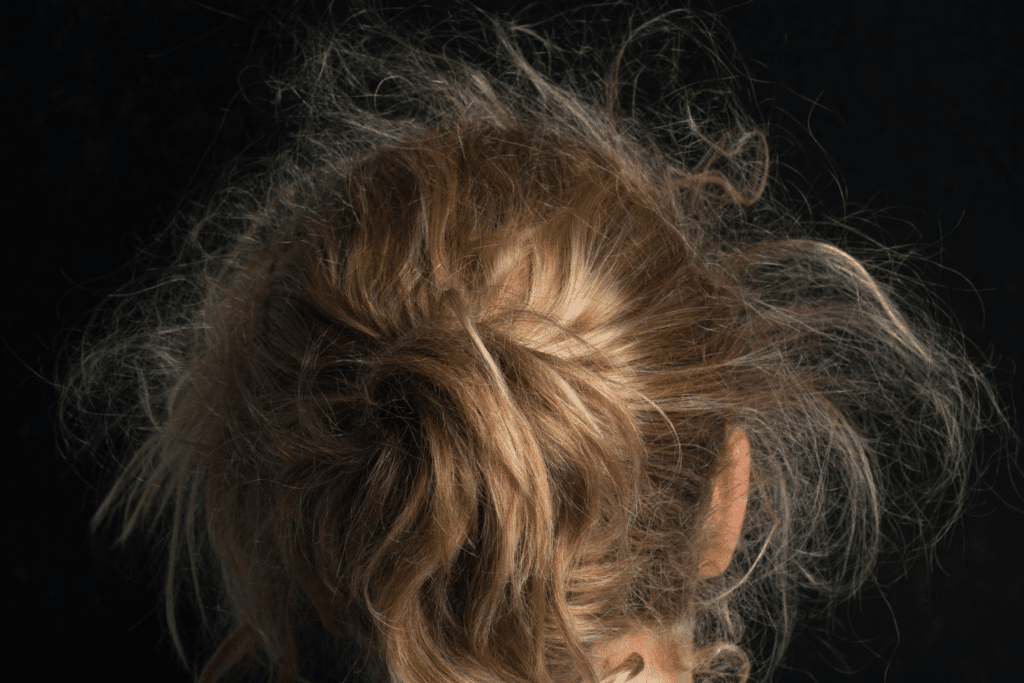
Myth 3: Hair loss is a result of sauna use
While excessive heat exposure can lead to some hair damage, saunas are not the primary cause of hair loss. Hair loss can be attributed to a variety of factors, such as hormonal changes, genetics, and stress.
Regular sauna sessions can actually promote blood circulation and relaxation, which may help support healthy hair growth.
Myth 4: Saunas cause hair breakage
The idea that saunas lead to hair breakage is another misconception. Although heat can weaken hair shafts, using a sauna occasionally and for a reasonable amount of time won’t cause significant breakage. To protect your hair from breakage during sauna sessions, consider using a heat protectant product (like that protects hair against hair dryers) before entering the sauna or wrapping your hair in a towel.
How to protect your hair in the sauna
Going to the sauna is a relaxing and rejuvenating experience for your body and mind. However, the heat and steam can sometimes cause your hair to become dry and brittle. To help you enjoy the benefits of a sauna without harming your hair, consider these steps to protect it:
- Wrap a towel around your head – This is the best way to reduce the amount of heat that comes into contact with your hair and if you are in the sauna for a short period of time it could help reduce the amount of sweat that forms on your head. Less heat means a lower stimulus for sweat glands to produce sweat, thus decreasing sweat production on the scalp. Alternatively, you could also use a shower cap, though look for a non-plastic cap – plastic melts.
- Use dry shampoo before going in – Dry shampoos soak up oil and sweat from your hair. They also act as a barrier between your scalp and the oil and sweat produced from your bout in the sauna. For a moisturizing shampoo suited to all hair types, try Not Your Mother’s Clean Freak Shampoo. For men, use this Batiste Dry Shampoo.
- Set a 20-minute timer – You should not be in the sauna for longer than twenty minutes at a time. Not only does this have the ability to damage your hair in the long term, but it could also result in severe dehydration caused by sweating.
- Apply a hair serum – This reduces frizz and will leave your hair looking as good as it did before you got in. If your hair has a tendency to get oily fast, simply rub the serum on your hair and avoid massaging it into the scalp. Use this GKhair Argan Oil Hair Repair Serum to retain your lustrous locks.
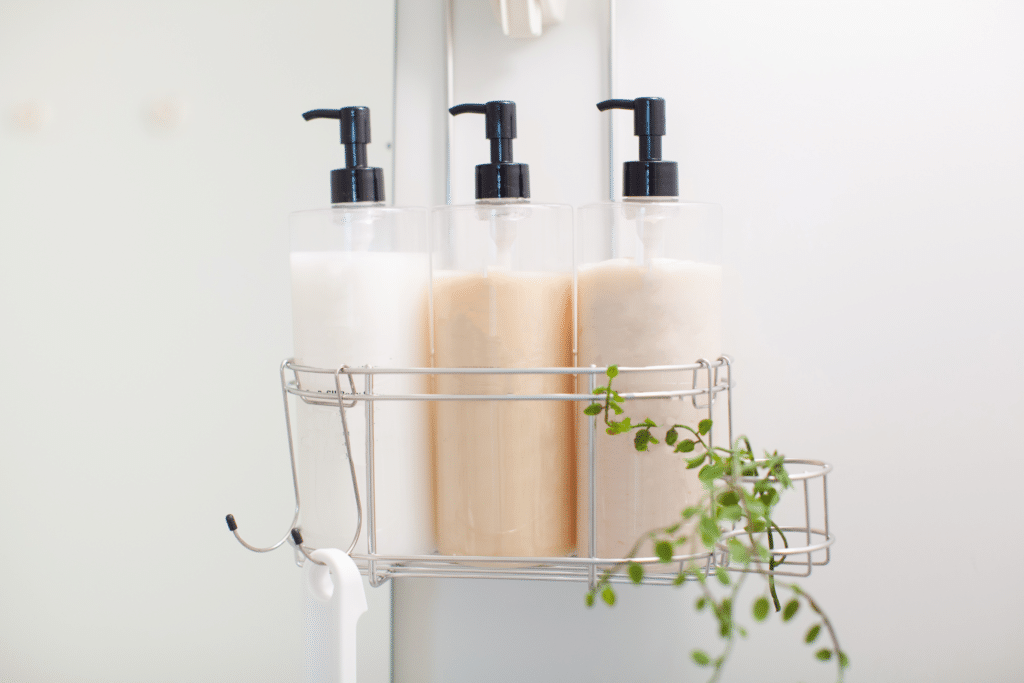
Consider adding these haircare products to your sauna routine:
- Deep conditioning treatment
- Leave-in conditioner
- Silicone-based hair serum
- Gentle shampoo
- Nourishing conditioner
For the perfect hydrating conditioner, use this Neutrogena Triple Moisture Daily Deep Conditioner. However, if you want some extra moisture, you can use a leave-in conditioner, like this The Honest Company Leave-in Conditioner.
By following these simple steps, you can ensure that your hair remains healthy and protected during your sauna sessions. Remember to always listen to your hair’s needs and adjust your routine accordingly to get the best results.
| Tip | Effectiveness |
|---|---|
| Wet hair before entering sauna | Helps retain moisture |
| Limit sauna sessions to 20 minutes | Reduces dryness and breakage |
| Use a leave-in conditioner or hair oil | Locks in moisture |
| Wear a towel or cap over the head | Shields from direct heat exposure |
| Apply hair serum | Reduces frizz |
How to protect your hair in a specific type of sauna
When it comes to saunas and their effect on hair, it’s essential to explore the various types available. This section will discuss dry saunas, steam rooms, and infrared saunas to understand if any of them contribute to hair dryness.
| Type of Sauna | Temp Range (°F) | Precautionary Measures |
|---|---|---|
| Dry Sauna | 180 – 195 | Wear cap, use leave-in conditioner |
| Steam Room | 110 – 115 | Wear cap, rinse with lukewarm water after use |
| Infrared Sauna | 120 – 150 | Wear cap, apply hair oil |
Dry (traditional) saunas
Dry saunas use dry heat to create a warm environment, typically between 180°F and 195°F. Although they can cause some temporary hair dryness due to the high heat, it is usually a minor issue. To avoid this, you can follow these simple steps:
- Wear a protective cap or towel to shield your hair from the direct heat.
- Apply a leave-in conditioner or hair oil before entering the sauna to lock in moisture.
Steam rooms
Steam rooms use moist heat through steam, maintaining a temperature between 110°F and 115°F. The humidity levels increase the moisture content in the air, which can be beneficial for your hair. However, it’s still essential to take precautions:
- Like in a dry sauna, wear a cap or towel to protect your hair.
- Rinse your hair with lukewarm water after using the steam room to remove any lingering moisture or residue.
Infrared saunas
An infrared sauna uses far-infrared rays that penetrate the skin to provide warmth without heating the air. This type of sauna operates at a lower temperature, usually between 120°F and 150°F, which may not have a significant impact on hair dryness. Here’s how to protect your hair in an infrared sauna:
- Although infrared saunas don’t produce the same level of heat as traditional saunas, it’s still a good idea to wear a protective cap or towel.
- Apply a hair treatment or oil before using the infrared sauna to keep your hair moisturized.
In summary, while various types of saunas can temporarily impact your hair’s moisture levels, simple precautions can help protect and maintain your hair’s hydration. Remember to always wear a protective covering and apply hair treatments when visiting any sauna environment.
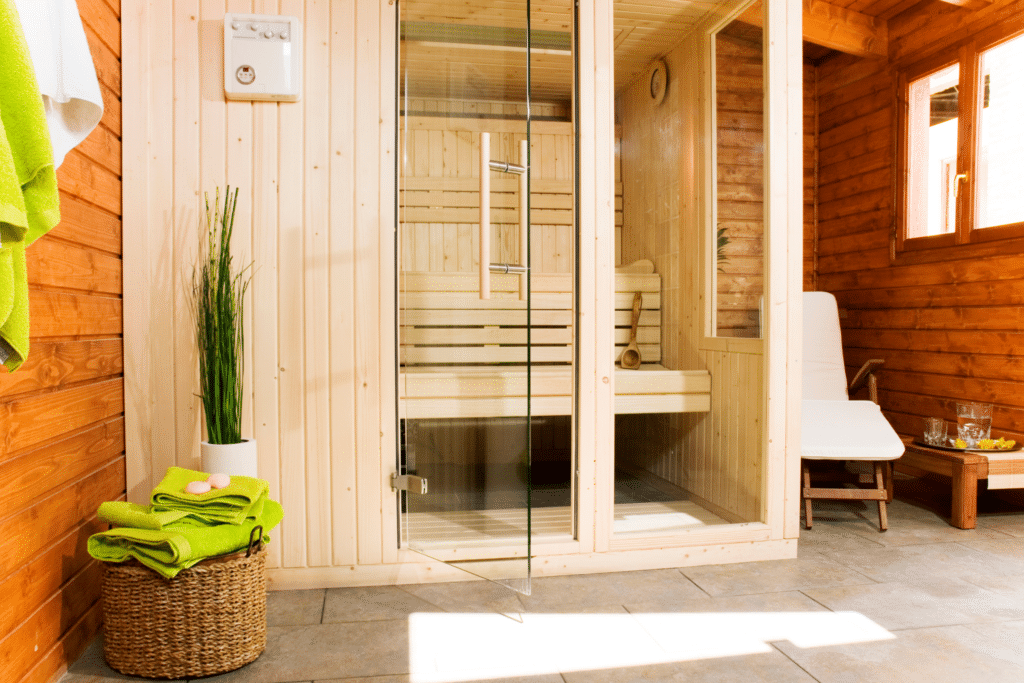
Tips to rehydrate and nurture your hair post-sauna
After enjoying a sauna session, it’s essential to rehydrate and care for your hair to maintain its health. Here are some friendly tips to get your hair back to its hydrated, happy state:
| Action | Benefit |
|---|---|
| Rinse with cold water | Closes hair cuticles, locks in moisture |
| Use a gentle shampoo | Keeps natural oils |
| Apply hydrating conditioner | Replenishes lost moisture |
| Use a leave-in treatment | Adds extra protection and moisture |
| Avoid heat styling tools for a day or two | Prevents further dryness and damage |
| Drink plenty of water | Hydrates from inside out |
- Rinse with cold water: Start by rinsing your hair with cold water. Cold water helps close hair cuticles, locking in moisture and preventing dryness.
- Use a gentle shampoo: Look for a gentle, sulfate-free shampoo. Such shampoos are less likely to strip your hair of its natural oils, keeping it moisturized and healthy.
- Apply a hydrating conditioner: Use a deep, hydrating conditioner to replenish the moisture lost during your sauna session. Ingredients such as glycerin and urea can help attract and retain water in your hair.
- Try a leave-in treatment: Leave-in treatments are an excellent way to provide added moisture and protection for your hair throughout the day. Opt for products containing natural oils, such as coconut or argan oil.
- Avoid heat styling tools: After your sauna, avoid using heat styling tools for a day or two. These can cause further dryness and damage to your hair.
- Drink plenty of water: Staying hydrated from the inside out is crucial for healthy hair. Make sure to drink enough water throughout the day to maintain overall hydration.
By following these simple tips, you can ensure your hair stays moisturized and nurtured, even after a relaxing sauna experience.
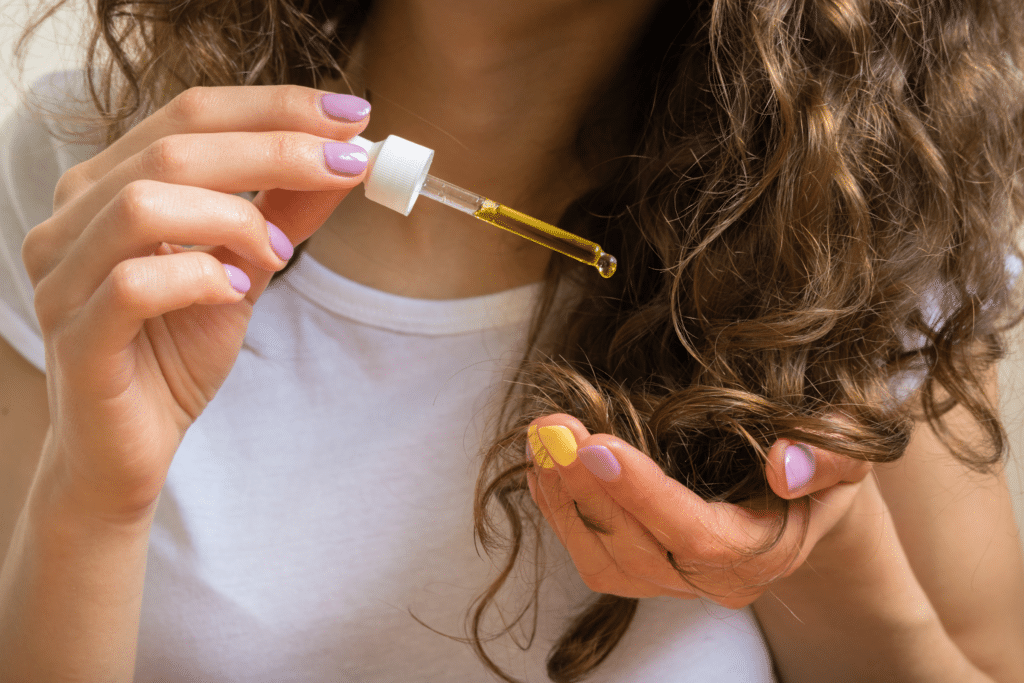
Does sweating dry out your hair in general?
Sweat secreted by your body does not only contain water. It also contains minute amounts of salt, protein, urea, and ammonia.
This combination of salt, protein, ammonia, and urea ensures that if you leave perspiration to dry, your scalp will dry out and your hair will typically dry out along with it.
A dried-out scalp is a problem as it can lead to:
- Hair loss. A dry scalp prevents hair growth.
- Dyed hair wearing out sooner. The salt in sweat results in a loss in color and vibrancy much sooner than expected.
Before a sauna, you need to ensure that you’re adequately protecting your hair, either by minimizing sweat production from the scalp or by taking steps to protect your hair and scalp from sweat produced.
Unfortunately, even wearing a hat or other head protection won’t help if you are in the sauna for a long time because the sweat will come out directly through the scalp. Instead, focus on deeply conditioning your hair before and after the sauna with oils and other products designed to lock in moisture.
